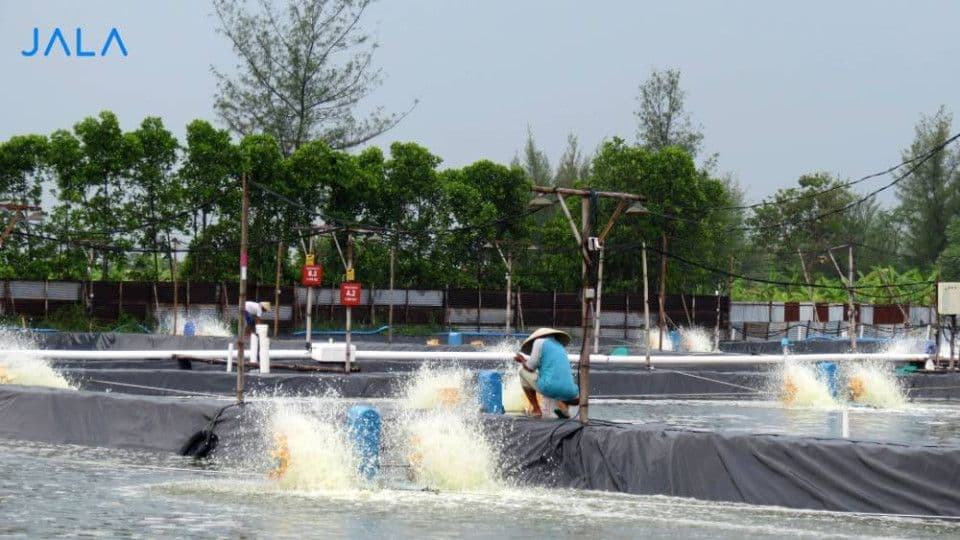
As a tropical country, the rainfall amount in Indonesia is quite high. Rainfall reflects water volume that falls to the earth. In the last few years, there have been two peak periods of the rainy season in Indonesia, at the beginning and the end of the year. The highest rainfall amount usually happens in February, while the lowest happens in August. The change of seasons from the rainy season to the dry season starts in April. Meanwhile, it happens the other way around in September.
Considering that shrimp farming is an outdoor activity, rainfall plays a role as an external factor that affects shrimp farming water quality conditions.
How does rain affect farms’ conditions?
Rain has direct and indirect effects on shrimp farming. Rain will affect water quality, which then affects the decrease of shrimp growth rate.
The disruption of water quality due to rain
Rain affects temperature drop for approximately 5-6℃. Rainwater also consists of acidity level (pH) that is relatively low at 6.2-6.4 in the non-industry area. Those two rainwater parameters can directly affect shrimp farms’ water.
Stratification or uneven water temperature will happen due to rain, especially on the base water. Sunlight will re-raise the water temperature, or if rain falls all day long can be supported by an aerator that will cause water to become homogen.
The temperature drop will decrease feed consumption for approximately 10% (dry weight) for every degree Celsius of temperature drop. If the water temperature drop is at 3-5℃, the feed consumption decrease might reach 30%.
Low temperatures will cause shrimps to seek warmer water and water surface as far as possible to avoid the rain sound or splash. It means, it is possible that shrimps will move to the bottom of the pond, which is having a decrease of DO.
Plankton drop and bacteria explosion
Plankton drop, especially on microalgae can happen after rain. It is caused by several involving factors such as the decrease of water pH, mineral, and micronutrient concentration, as well as low sunlight intensity.
As a result, heterotrophic bacteria, which have a role in organic materials decomposition, will increase with the availability of nutrients from dead algae and settle on the bottom of the pond. Anoxia or oxygen deficiency conditions on the bottom of the pond can happen due to bacteria activities and the decrease of oxygen production by algae.
DO, pH, and temperature that decreases during a long rainy season will create a less ideal environment for shrimps. Vibrio prefers this condition and has the potential to dominate or even become a pathogen. If normal feed ratio is continued, feed will be wasted and bacterial decomposition will increase.
Mineral dilution disrupts homeostasis and shrimp molting
High rainwater volume that falls into the pond will cause salinity dilution and hardness due to ion concentration drop in the water. If it happens to shrimps in their molting phase, the process will be disrupted, especially during post-molting when shrimps need to absorb calcium and magnesium minerals to shape their skin.
Salinity and hardness decreases indeed do not directly affect shrimp death, but it has a significant effect on shrimp homeostasis (internal balance). The lack of minerals also triggers the disruption of shrimp molting process, which will actually weaken the immune system and cause soft shell to shrimp.
Understanding the mechanism of how rain affects farm conditions will cause farmers to have preventive plans to maintain their farm conditions to stay optimal and will not disrupt the production process. So, are you ready to face the rainy season?





